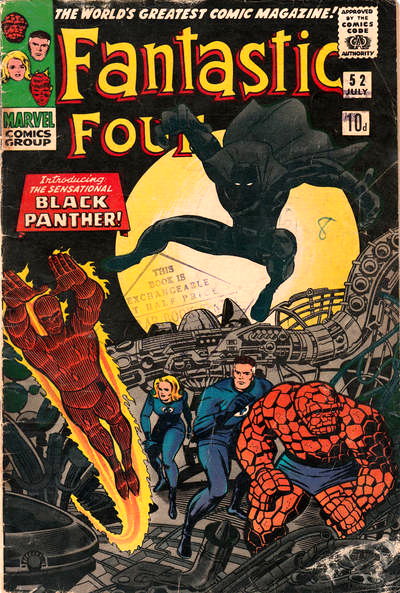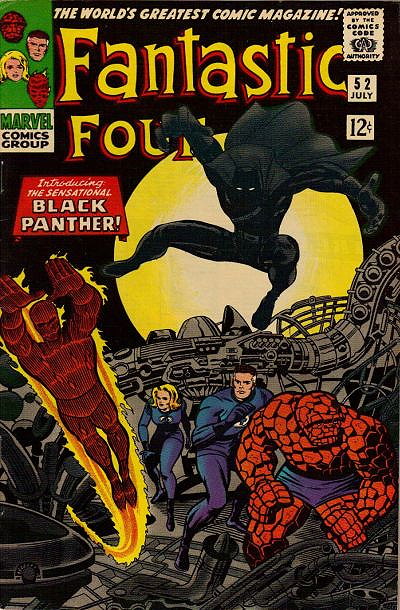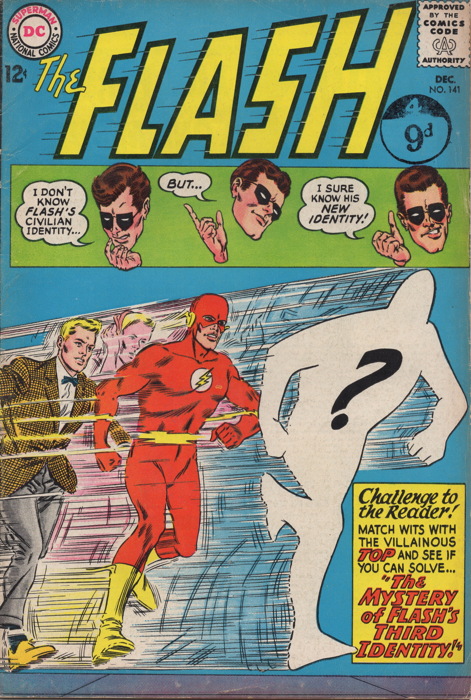Just lay back and think of variants.
I’ve been trying, for the most part, to focus on variant covers that were available simultaneously to the same market, forcing customers to chose to buy one or the other (or the other or the other or the other, if it’s a Marvel book). Or, preferably, to buy every offered cover, and hope the excess of choice doesn’t turn in a no-sale.
For today’s variant cover-age discussion, I just wanted to point a virtual index finger at U.S. comics printed in distant lands with cover prices in their currencies. Which bums me out just a tad as I had a number of UK editions of Silver Age Marvel books show up in a collection a while back.
Said collection came from a lady had been a child in England during the 1960s, and had bought her fair share of funnybooks off the stands there at the time. When she came to the U.S., the comics made the move with her, and she held onto them for all the time before deciding to bring them to me for sale. Lots of Marvels (Avengers and Fantastic Four, mostly, including the first appearance in FF of the Black Panther), all preprinted with the pence price, like so:

And for comparison, the U.S. edition:

The collection also contains a number of DCs, mostly Flash and Green Lantern, that, instead of already having the proper price in the local currency printed thereon, were ink-stamped instead:

A few of the Marvels in the collection were stamped like this, but mostly they were printed with the alternative coinage.
Anyway, the reason I said my having these “bums me out” is because the Marvels in that collection, like pretty much any Silver Age Marvel that I acquire, sold almost immediately. I don’t have them in my hands for direct inspection, requiring me to once again mooch off the Grand Comic Database for a couple of the above images. (The Flash, I still had floatin’ around.) If memory serves, the comics were identical to their U.S. counterparts save for the pricing. The indicia, the block of text inside with all the copyright and printing information, I think was the same, but I’m not 100% on that.
To the best of my iknowledge, the two versions were printed and released at the same time, so technically I suppose any jetsetting kid could have the quandary of either buying the one with the American price or waiting for the trip overseas to buy the British version. But by and large, the comic marketing twain did not meet.
The main point I wanted to make about these comics printed with the UK prices is the change in perception towards them that we’ve seen over the years. For the longest time, a UK edition, identical in every other way, was deemed “inferior” to the U.S. edition in the collector’s market. It wasn’t the “real” version, or simply a “reprint” and thus commanded less demand and lower prices, generally speaking.
Well, as we’ve seen in recent years, especially in the last year and a half, the demand for anything that can be deemed “hot” and “collectible” has absolutely skyrocketed. Just the other day I was looking at one online marketplace, shocked at the prices for old Comic Reader fanzines…things I used to buy in bulk at a dozen for ten bucks, now being offered at $80 to $150 each. Whether they’re realizing those prices with actual sales, I don’t know, but it’s definitely part of how things are trending of late.
When that collection of UK books came in, my research (along with some consultation with former boss Ralph) revealed that most UK editions are now pricing at least equal with their U.S. counterparts, if not more. And a quick look at eBay and elsewhere can see them being hyped as “RARE!” “VARIANTS!” to attract eyeballs. Quite the change from the vague disdain (at worst) to mild amused novelty that the UK editions used to receive. I mean, I guess they’re in a bit shorter supply than the U.S. comics, since fewer copies were required for the UK newsstands. And they are harder to find in the States, since they were never distributed here. It’s still strange to see them ballyhooed like this.
Which of course had me wondering if the versions printed with U.S. prices are the oddity in the UK. My guess is probably “not as such,” giving the larger print runs of the American editions and the likely flow of books from here in the UK market via collectors. But I bet someone out there can set me straight.
So there you go…yet another type of variant you need to worry about. Didn’t have much to say about it, aside from the nearly 800 words above, but I found the shift in collecting perception interesting. And it wasn’t just the current rush for collectibles we’re seeing that did it, as I acquired, and blew out the door, all these UK Marvels before the madness really set in.
Not sure what’s next in the ol’ variant cover-age, aside from continuing to make the phrase “variant cover-age” a thing, but I appreciate you reading all these and I hope I can cook up more next week!








Hi Mike, I’m no expert, but I am British so let me chuck in my hapeth before someone who actually knows what they’re talking about gets here. As far as I remember, US-priced comics didn’t generally attract a premium over UK editions, although I’m sure some sales listings pointed out the difference, possibly on higher-value items. There was also sometimes a ‘cover stamp’ notation, because some retailers as well as stamping the UK price onto US editions, also put their big inky footprint on the cover (like in your FF example) especially if it was a place where you could take back the comics once you’d read then and swap then for other comics, records, etc. The other thing perhaps worth noting was that there were certain generally single issues of comics which didn’t make it over here (I seem to remember an issue of Detective Comics I was chasing for a long time) which were flagged up as ND (non-distributed) which rightly attracted a premium (and I don’t mean direct sales stuff like Moon Knight or Ka-Zar) just odd issues of both Marvel and DC. Hopefully someone will put me right on all this and challenge my fading memory.
“any jet-setting kid”
Aw, great, now I’m picturing Richie Rich commandeering the Rich Industries jet once a week to pick up British variants at Forbidden Planet in London.
For my money, it is the US editions which should be looked at with disdain because they are not exchangeable at half price.
I love Silver Age comics with stamps and/or writing on the cover. They might damage the illusion of the cover illustration, but they add a different kind of depth that I really like.
In other news, the not-quite-lined-up issue number and price boxes on that FF cover make my eyelid twitch.
That FLASH cover perhaps clears up a little mystery for me. My experience of British editions of Marvel and DC comics had all been of comics clearly printed for the British market, with different titles and larger page sizes, and often with black & white interiors. So, I was a bit puzzled by the selection of DC comics that Paul McCartney keeps on his piano in place of sheet music in the film HELP!, as they all appeared to be American editions. If they had been McCartney’s personal collection then he could have picked them up on his many trips to the U.S., but I took for granted that these had been assembled by the prop department, and I wondered where they found all these American comics.
So, the fact that in the 1960s DC was printing British editions that were identical to the American ones except for price explains everything.
I mean, obviously, the composer of the song “Magneto and Titanium Man” must have read American comics. I simply doubt that dressing film sets was one of his responsibilities.
Apart from a very brief (like a couple of months) period in the early 70’s, DC didn’t print books with a UK price until I think around 1978 or something like that. Almost everything prior to that (or at least what made it over here, which wasn’t anywhere near everything) was stamped with the price like that Flash book of Mike’s. Iirc Thorpe and Porter, DC’s UK distributor in those days, was actually owned in some roundabout way by DC themselves, weirdly.
Unlike DC, Marvel had been printing a UK price version of their books since the early 60’s. Both FF #1 and Amazing Fantasy #15 have pence variants.
As Will mentions above, the dreaded ND books were the bane of any UK-based fan trying to put a run of anything from the 60’s, 70’s and even 80’s together for a long time. Marvel especially tended not to distribute any comics in the UK that were being reprinted in the larger black and white mags, so huge swathes of Spider-Man, Hulk, X-Men and FF never made it over here at all.
It doesn’t exactly jibe with the comments above but as I (a child if the 80’s) remember it, for a long time pence variants were usually looked down upon here in the UK as well, and generally fetched lesser amounts than their more exotic and ‘authentic’ US-priced counterparts. That might all have changed with the latest round of madness though, as you say Mike.
[…] choice.” I’ve more or less followed that here, maybe not strictly exclusively (like the international comics purposefully not offered to the same customers), but that was sort of my overall […]